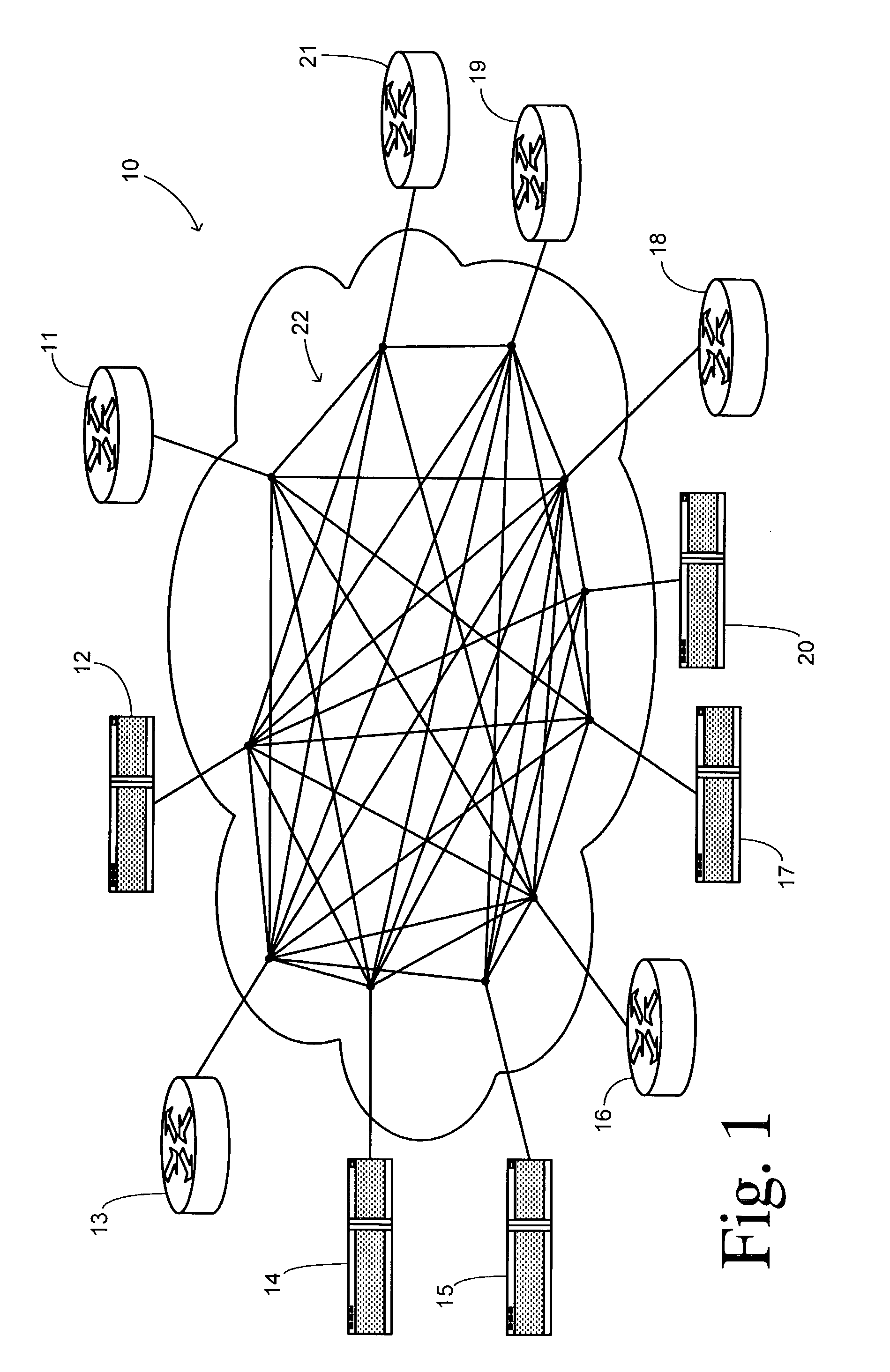Network maintenance simulator with path re-route prediction
a network maintenance simulator and network technology, applied in data switching networks, instruments, frequency-division multiplexes, etc., can solve problems such as unpredictable restoration steps, traffic load levels within a network affecting the performance of all network elements, and inability to support all possible requests of network resources
- Summary
- Abstract
- Description
- Claims
- Application Information
AI Technical Summary
Benefits of technology
Problems solved by technology
Method used
Image
Examples
Embodiment Construction
[0020]Referring to FIG. 1, an example of a meshed network 10 includes a plurality of routers 11-21. Meshed interconnections 22 create a network topology that provides many redundant communication paths between two nodes in the network, resulting in resilient data transport. Network 10 may be an IP network or an optical network, for example.
[0021]When a router 11-21 fails or is removed from the network for maintenance, the network is reconfigured so that the remaining devices take its place. The network devices may be grouped so that data paths using a direct link between routers 19 and 21 are re-routed to links (resources) between 19 and 12, and 12 and 21, for example. If two or more routers within the same group attempt to switch over to the same failover resources during the same time period, then the switchover may fail for one or all devices or congestion may result at the devices providing the failover resources thereby significantly degrading network performance. Due to the co...
PUM
 Login to View More
Login to View More Abstract
Description
Claims
Application Information
 Login to View More
Login to View More - R&D
- Intellectual Property
- Life Sciences
- Materials
- Tech Scout
- Unparalleled Data Quality
- Higher Quality Content
- 60% Fewer Hallucinations
Browse by: Latest US Patents, China's latest patents, Technical Efficacy Thesaurus, Application Domain, Technology Topic, Popular Technical Reports.
© 2025 PatSnap. All rights reserved.Legal|Privacy policy|Modern Slavery Act Transparency Statement|Sitemap|About US| Contact US: help@patsnap.com



